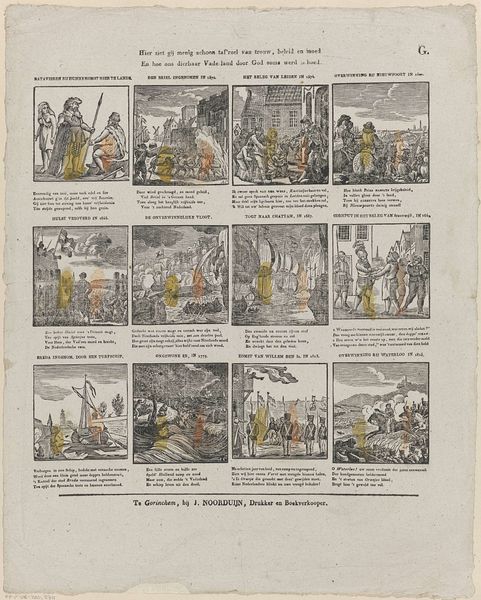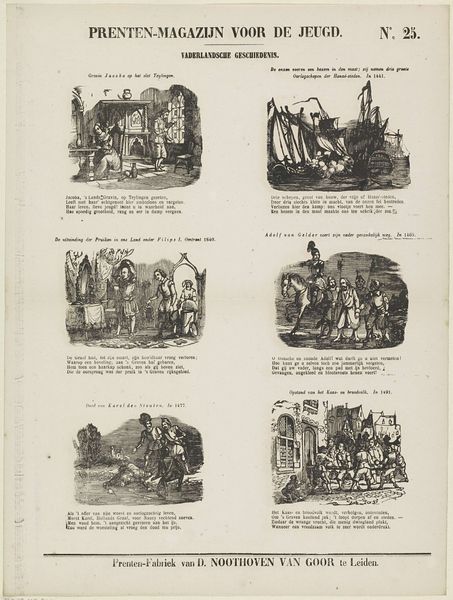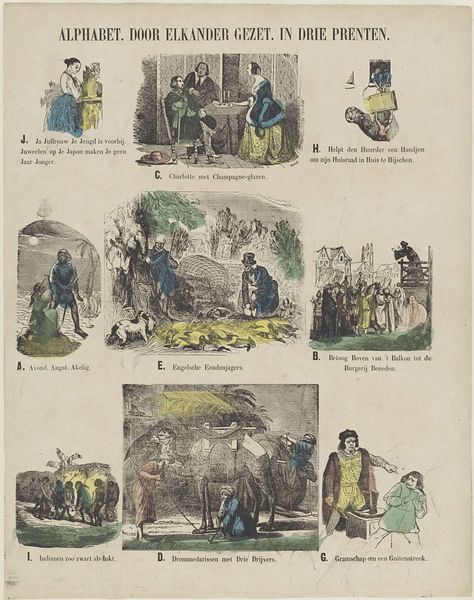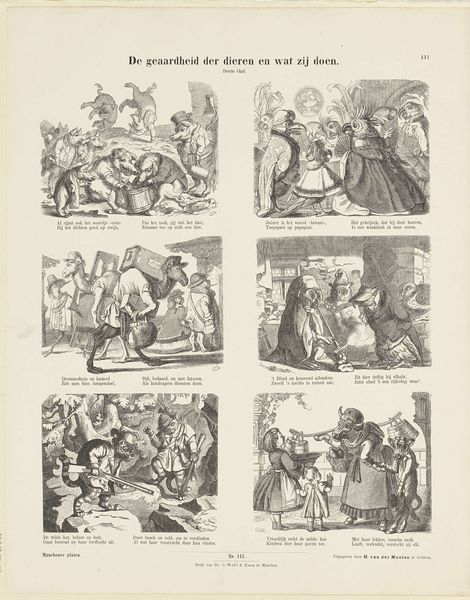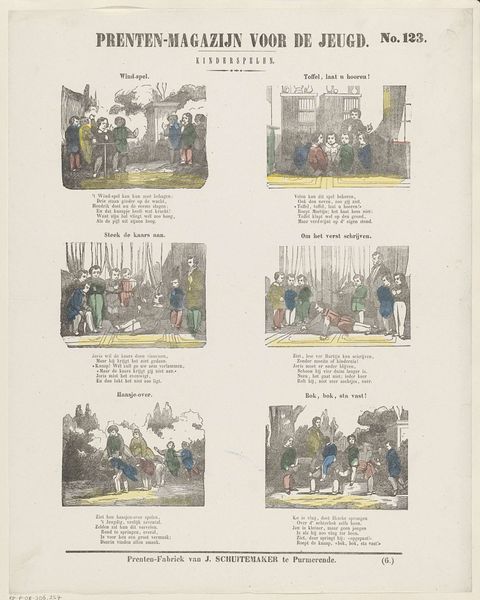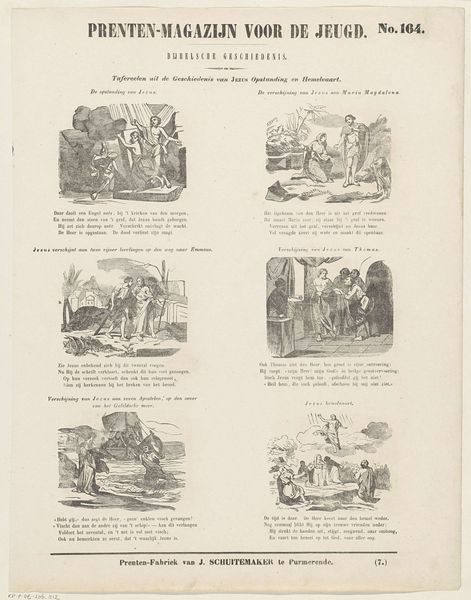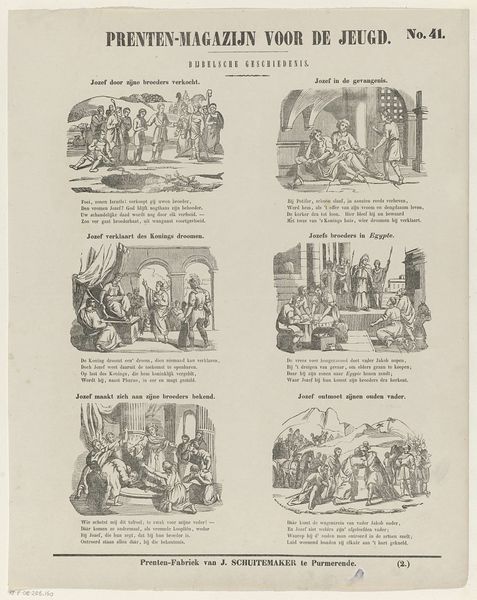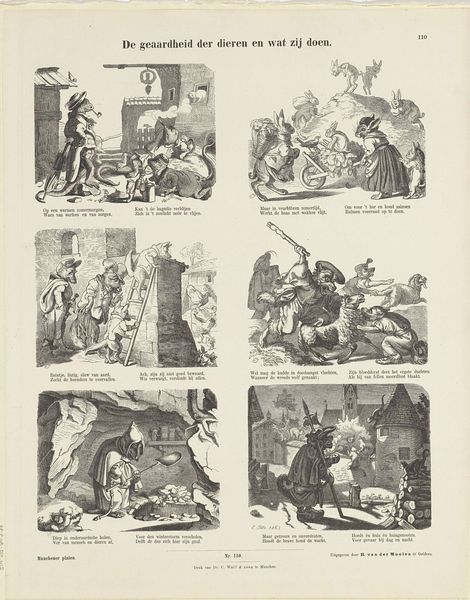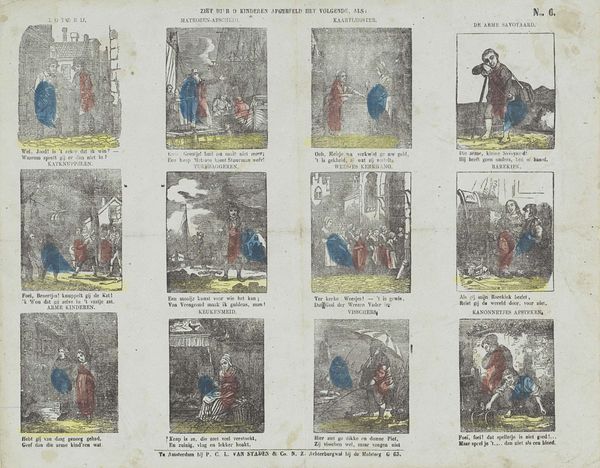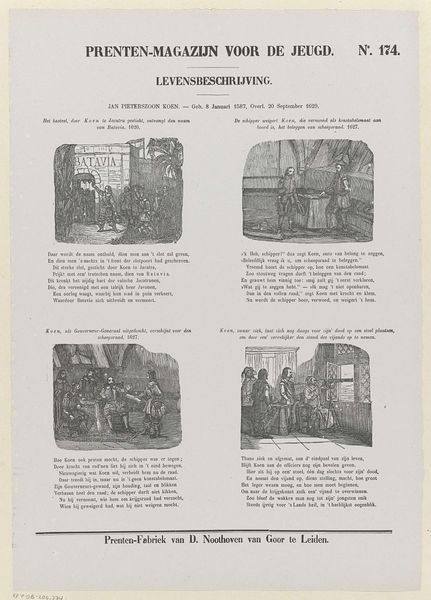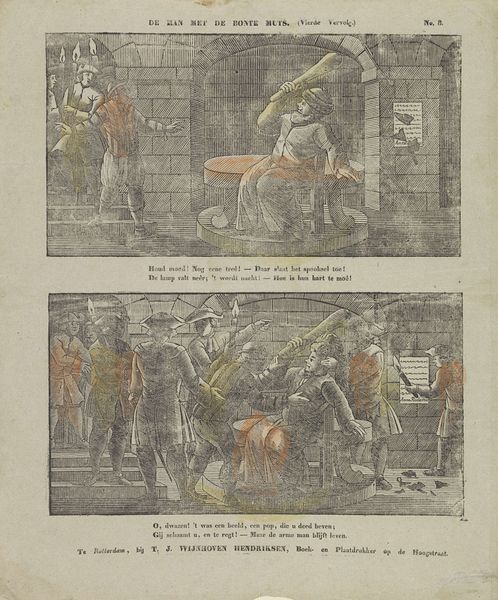
graphic-art, print, engraving
#
graphic-art
#
comic strip sketch
#
aged paper
#
narrative-art
# print
#
sketch book
#
personal sketchbook
#
idea generation sketch
#
sketchwork
#
journal
#
sketchbook drawing
#
history-painting
#
storyboard and sketchbook work
#
sketchbook art
#
engraving
Dimensions: height 428 mm, width 344 mm
Copyright: Rijks Museum: Open Domain
Curator: Let’s consider this print by Gerhardus Philippus Zalsman, titled “Gewijde en ongewijde geschiedenis,” created between 1869 and 1882. It's a fascinating compilation of engraved scenes. What's your immediate impression? Editor: It's quite dense! A series of vignettes packed onto aged paper—the composition feels deliberately chronological. Each miniature scene has distinct, carefully constructed spatial dynamics and light effects. The textural details captured with the engraving are intriguing; I want to look at it closer. Curator: Indeed. The artist compiles scenes from biblical narratives, framing moments from both the Old and New Testaments. Look, there's Stephen's stoning alongside an image referencing the story of Joseph interpreting Pharaoh's dream. It visually juxtaposes established narratives of piety and divine intervention with graphic scenes of oppression. How does it engage with contemporary ideas about religion, history, and truth? Editor: From a formal perspective, it reads like a storyboard. Each frame employs similar graphic strategies, unified through their material execution. This gives the disparate narratives visual equivalence, demanding that the viewer perform the work of differentiating narrative intention and impact. The composition prompts an intriguing semiotic reading. Curator: And consider the moment this was made: 19th-century Holland, amid evolving religious and social landscapes. Zalsman appears to reflect these anxieties by placing such a diverse range of biblical moments within a single, accessible print. It may be posited as part of a broader negotiation of religious values in the face of modernization and social upheaval. Editor: Yes, and that contextual reading certainly impacts our understanding of the visual and structural decisions. Without understanding that tension, it's just a historical object of middling aesthetic value. But, recognizing the background allows us to unpack its cultural purpose and intended viewership. Curator: Absolutely. Viewing this through both a contemporary, socially conscious lens and with formal appreciation grants a wider understanding of its message. Editor: Agreed. Seeing this artwork from its compositional elements and period-infused background reveals new possibilities for interpretation.
Comments
No comments
Be the first to comment and join the conversation on the ultimate creative platform.
